Latest Development about IP5 Offices

State Intellectual Property Office of P.R. China
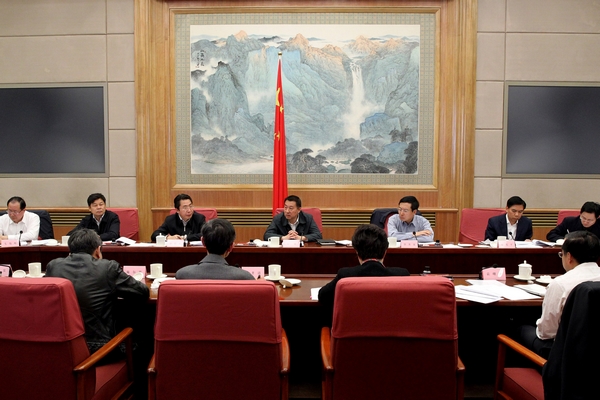
Latest Statistics
The number of patent applications received by the State Intellectual Property Office of P.R. China(SIPO) continued to increase in 2014. Throughout the year, SIPO received a total number of 2,361,000 applications for invention patents, utility model and industrial design, of which 928,000 were applications for invention patents, representing a yearly increase of 12.5%. SIPO received 26,000 PCT (12.2% of the world's total) applications in 2014. This shows a year-on-year increase of 14.2%.
Latest Development on IP Laws and Policies
The Chinese government attaches great importance to innovation and IP and has made significant efforts to establish a sound environment for business venture and public innovation, so as to provide strong support for promoting the quality and efficiency of its national economy. In December 2014, the State Council published the Action Plan for Deepening the Implementation of the National IP Strategy (2014-2020). For the first time in history, the Action Plan brought forward the new objective of "building up strong IP competence for China". Recently, the Central Committee of the Communist Party of China and the State Council jointly published the Several Opinions on Deepening Reform of Systems and Mechanisms and Accelerating the Implementation of the National Strategy on Innovation-Driven Development, which stated that the IP system should be deemed as the primary incentive of innovation and reiterated that a more stringent IP protection system will be implemented. Last August, the Standing Committee of the National People's Congress passed a decision to establish specialized IP courts in Beijing, Shanghai and Guangzhou to enhance judicial protection to IP.
Recently, SIPO has been actively pushing forward a new round of comprehensive amendment to the Patent Law. SIPO officially published the draft amendment to the Patent Law on April 1st for public comments.
Latest development of SIPO
1. Enhanced patent examination quality and efficiency
SIPO completed the examination of 431,000 applications for invention patents in 2014, increased by 22.9% as compared with the previous year. The pendency period has been reduced to 21.8 months.
2. Active efforts in promoting utilization of patents
In 2014, the amount of financing raised through patent pledge was RMB 48.9 billion, increased by 92.5% compared with the previous year, benefiting 1,850 SMEs and micro-enterprises. Patent insurance services were extended to 798 enterprises around China.
3. Enhanced IP protection
In 2014, the total number of cases solved through patent administrative enforcement was 24,479, representing a year-on-year increase of 50.9%. The social satisfaction rate on patent protection has been further promoted.
4. Further the reform on systems and mechanisms for IP administration
An agency for integrated IP administration and enforcement is established in the Shanghai Free Trade Zone. The Pudong New Area established an agency for integrated IP administration.
5. Focus on optimizing services to right holders and the public
In 2014, SIPO launched the Experimental System for Patent Data Services which provided free download of the latest IP5 patent data of recent 30 days. SIPO also introduced the IP5 PPH pilot program and made progress on the initiative of common PPH request form, which were well-reviewed by its IP5 peers.
European Patent Office
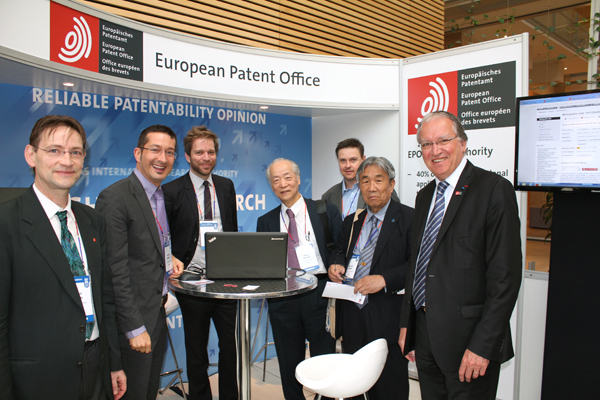
Profile
The European Patent Office (EPO), the second-largest intergovernmental institution in Europe, delivers high quality patents for technical inventions in up to 40 European countries on the basis of a single patent application.
With a highly trained examiner workforce of well over 4,000 engineers and scientists, the EPO delivers high quality patents that stand out for their legal certainty, and which provide a reliable basis for decisions of inventors and companies around the world.
Growing demand for patents
Demand for the EPO's services is rising steadily with 274,000 patent filings in 2014, and 40% of world-wide international searches and more than half of all international preliminary examinations under the PCT being performed by the EPO.
The growing demand for patents presents the EPO with particular procedural and administrative challenges. In response to these challenges, the EPO has put an even stronger focus on quality, efficiency and timeliness.
Two hallmarks of our quality policy stood out in 2014: the EPO obtained ISO 9001 certification for its entire patent granting process covering search and examination, opposition, limitation and revocation—an unmistakable, independent vote of confidence in our services for the rapidly evolving European patent system.
Harmonised services for users acting globally
Working closely with our partner patent offices worldwide, the EPO launched several initiatives in 2014 to help users manage their applications more effectively and thus save time and money by providing a single point of access to information on how their applications are progressing at different patent offices.
As part of our co-operation in the grouping of the five largest IP offices in the world (known as the "IP5"), the EPO and SIPO introduced a new service in 2014 called the Global Dossier. It provides a free online file inspection (also known as a "file wrapper") service that allows users to access SIPO's publicly available documents directly on the EPO website— on both the European Patent Register and Espacenet. In April 2015, we extended the EPO's Global Dossier service to include data from the Japan Patent Office and the Korean Intellectual Property Office. Data from the United States Patent and Trademark Office is expected to be added soon. This service aims to simplify access to information both for applicants and the public, and to enhance the transparency of the patent system.
Improvement of the European patent system draws near
The unitary patent will simplify procedures and lower costs for patent owners, while increasing legal certainty thanks to the introduction of a Unified Patent Court. Since the 25 participating EU member states reached political agreement in late 2012, steady progress has been made. In 2014 Europe moved closer to this much-awaited reform.
Japan Patent Office
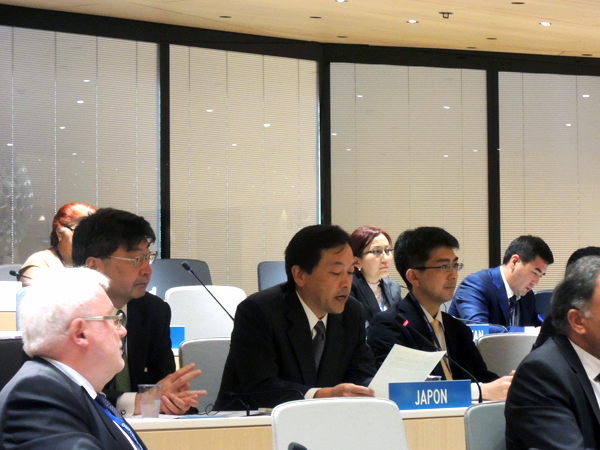
The number of patent applications filed in Japan in 2014 was 325,989. The number of filings has been gradually decreasing since 2006. The number of patent applications filed from Japan to abroad was 201,410 in 2013 and the number of PCT international applications filed was 41,292 in 2014, showing that the number has almost doubled compared to 10 years ago.
The Japan Patent Office (JPO) is strengthening its patent examination system, aiming at "the world's fastest and utmost quality". In March 2014, the JPO achieved its ten-year goal of shortening the first-action (FA) pendency to 11 months or less, i.e., the length of time it takes for the JPO to issue its first actions. In addition, the JPO has established a Subcommittee on Examination Quality Management in August 2014 for the purpose of conducting an objective evaluation of quality management for examination.
The JPO has also enhanced its cooperation with other IP Offices around the world in order to support globalized business activities. The JPO is currently conducting Patent Prosecution Highway (PPH) programs with 31 countries/regions. This program is designed to enable applicants to acquire rights more quickly. Furthermore, under the Global Dossier Initiative, The JPO is actively contributing to efforts aimed at linking IP Offices' systems so as to facilitate sharing information with each other on filings and examination, as well make it possible for users to access such information. The JPO is also promoting cooperation with emerging countries such as those in the ASEAN Region, by having examiners meet and discuss their respective examination practices with each other, and thus, enable them to gain a better mutual understanding of examination.
The JPO is also working to assist SMEs/venture companies that form the backbone of economic support in local regions. Starting in FY2014, as means of enhancing its support, the JPO is assigning IP experts such as lawyers and patent attorneys to work at the JPO's "Comprehensive IP Support Service Counters" located in every prefecture, in order to provide technical consultations on IP issues more promptly. Furthermore, in response to the increasing number of cases in which regions are being revitalized by regional brands, Japan revised its law on regional collective trademarks in May 2014.
From the perspective of making Japan the world's leading IP-based nation, the Patent System Subcommittee from March 2014 has been discussing system-related issues, which support the innovation system. In March 2015, the bill to revise the Patent Act and other Acts was approved by the Japanese Cabinet and submitted to the Diet.
The year 2015 marks the 130th year since the industrial property system was established in Japan. The number of patents registered in Japan until now is approximately 5.3 million, second to the United States. It is also a milestone year for Japan. During 2015, Japan will accede to the Geneva Act of the Hague Agreement Concerning the International Registration of Industrial Designs. In addition, nontraditional marks such as "colors" and "sounds" will become eligible for protection.
Korean Intellectual Property Office
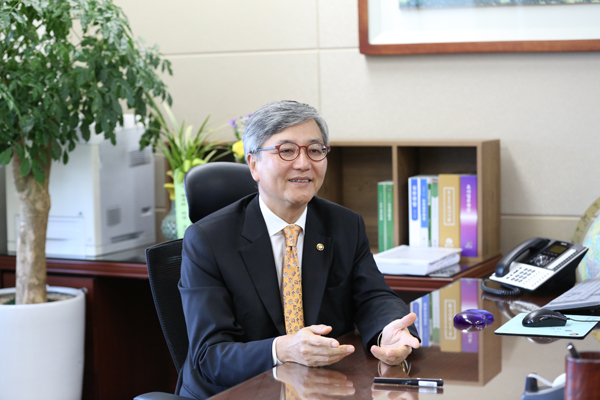
Patent filings and PCT filings
Last year, the Korean Intellectual Property Office (KIPO) received roughly 210,000 new applications; this has been on a steady rise for six consecutive years.The number of PCT applications was 13,138 in 2014, a 5.6% increase year-on-year.
Prompt granting of rights
KIPO has simultaneously managed to reduce the pendency for patents to 11 months last year from 17 months in 2010, thus allowing businesses to quickly turn their innovative ideas into strong IPRs.
In 2014, 65% of Korean PCT International Search Reports were completed within the required three-month period, a remarkable improvement. KIPO plans to increase the rate to 80%.
Accuracy in examination
KIPO is focusing more on professional training for its staff and looking to facilitate consultations between examiners.
KIPO employs highly-skilled staff and experts, with many PhD holders, experienced technicians, and engineers as examiners. KIPO plans to add an additional 25 examiners this year and expands its examiner workforce gradually.
In January 2015, KIPO fully adopted the CPC and expected to see improved efficiency in its searches resulting in improvements to examination quality as a result.
KIPO is also working on improving the patent search system, which is a key part of examination. In 2014, KIPO launched Chinese-to-Korean machine translation and plans to develop the next generation search system this year.
Revision of Patent Act
KIPO has placed more focus on improving user convenience and protection for creative ideas.
Starting from 2015, KIPO has considerably eased the requirements for filing documents. Applicants are now allowed to submit dissertations, lab notes, or documents describing their ideas, which enables the quicker granting of rights. On top of that, the lab notes and content can be in English, and any English language dissertations can also be submitted.
Previously applicants were supposed to make amendments to the translations. After the revision, applicants need to amend the original specifications. By extending the deadline for submitting translations, KIPO has increased the convenience for applicants filing in foreign languages.
In addition, KIPO has eased the grace period requirements. After the change, applicants are afforded a grace period once they have declared their claims for one either before or at the time of registration. KIPO will continue to improve the Patent Act to ensure the accuracy of examination and the effectiveness of protecting issued patents.
KIPO is considering reducing the period for requesting examination to three years from the existing five years. KIPO plans to make provisions that will allow patent examiners to re-examine an application if a legitimate ground for rejection is found in the application. KIPO is also considering the introduction of a program that would allow the public to review issued patents and, if found unqualified, request a cancellation of the rights.
Global cooperation in the IP field
KIPO is keen to work with the other IP5 offices to enhance work-sharing activities and to ensure a user-friendly patent system, which are fundamental to IP5 cooperation.
Also, KIPO is committed to working more closely with emerging countries and economies where awareness on IP protection is increasing.
KIPO, as a responsible member of the international IP community, will continue to expand its ODA to provide assistance through appropriate technology and branding to LDCs and developing countries.
U.S. Patent and Trademark Office
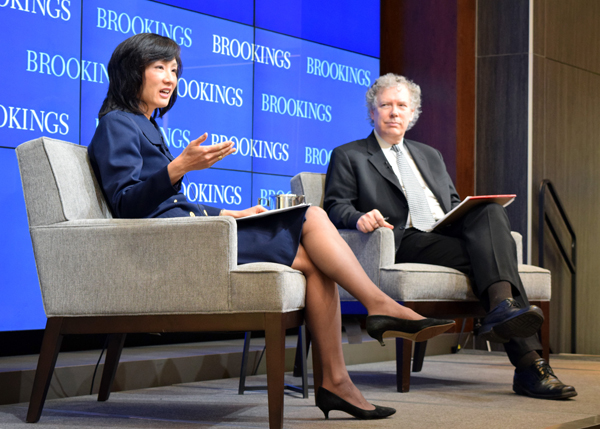
The U.S. Patent and Trademark Office (USPTO) is a leader in promoting effective and balanced intellectual property protection worldwide. The USPTO's mission is to foster innovation, competitiveness, and economic growth, domestically and abroad, by delivering high quality and timely examination of patent and trademark applications, guiding domestic and international intellectual property policy, and delivering intellectual property information and education worldwide, with a highly-skilled, diverse workforce.
The USPTO is committed to reduce the excess inventory of unexamined patent applications and pendency and has implemented various initiatives, pilots, and operational improvements. The USPTO attaches great importance to international collaboration and launched several key initiatives to help attain the goal of issuing quality, timely patents. Together with the EPO, the USPTO is engaging other IP offices to expand the usage of CPC and to explore future enhancements to the CPC system.
The USPTO continues to leverage work-sharing opportunities through programs like the Patent Cooperation Treaty (PCT) and Patent Prosecution Highway (PPH) to contribute to reduced processing time. The United States is one of 19 offices currently accepting PPH requests by using this framework.
In terms of processing applications, first action pendency has been reduced to 18.3 months, whereas average total pendency has fallen to approximately 26.9 months. The current plan is to further reduce those periods to 11.3 and 21.0 months, respectively, by FY 2018.
The USPTO quality measurement has been expanded and made more transparent. The agency has redoubled its efforts to train its patent examiners, to ensure they stay abreast of the latest developments in the law and technology. By providing effective training throughout an examiners career, the USPTO further enhances patent examination fundamentals, legal nuances, communication, and cooperation between the examiner and applicant.
To further address the issue of quality, the USPTO recently launched the Enhanced Patent Quality Initiative.
The new initiative is built around three core elements: excellence in prosecution services,excellence in customer service and excellence in quality measurement. All options are being considered—large and small—before examination, during examination, and after examination, to include increasing resources to patent examiners as well as comparing best practices with IP5 offices and other offices around the world.
The USPTO also recognizes that the public can and should play an important role in creating a better patent system, which is why the USPTO expanded its outreach around the country by holding roadshows and roundtables and engaging stakeholders in an open discussion with the USPTO patent staff. The USPTO is committed to making great strides and improvements in the protection and enforcement of intellectual property rights in the future.
The USPTO looks forward to building a world-class intellectual property system; and to do so in collaboration with all of the partner offices throughout the world for the benefit of all.
2015-05-21
